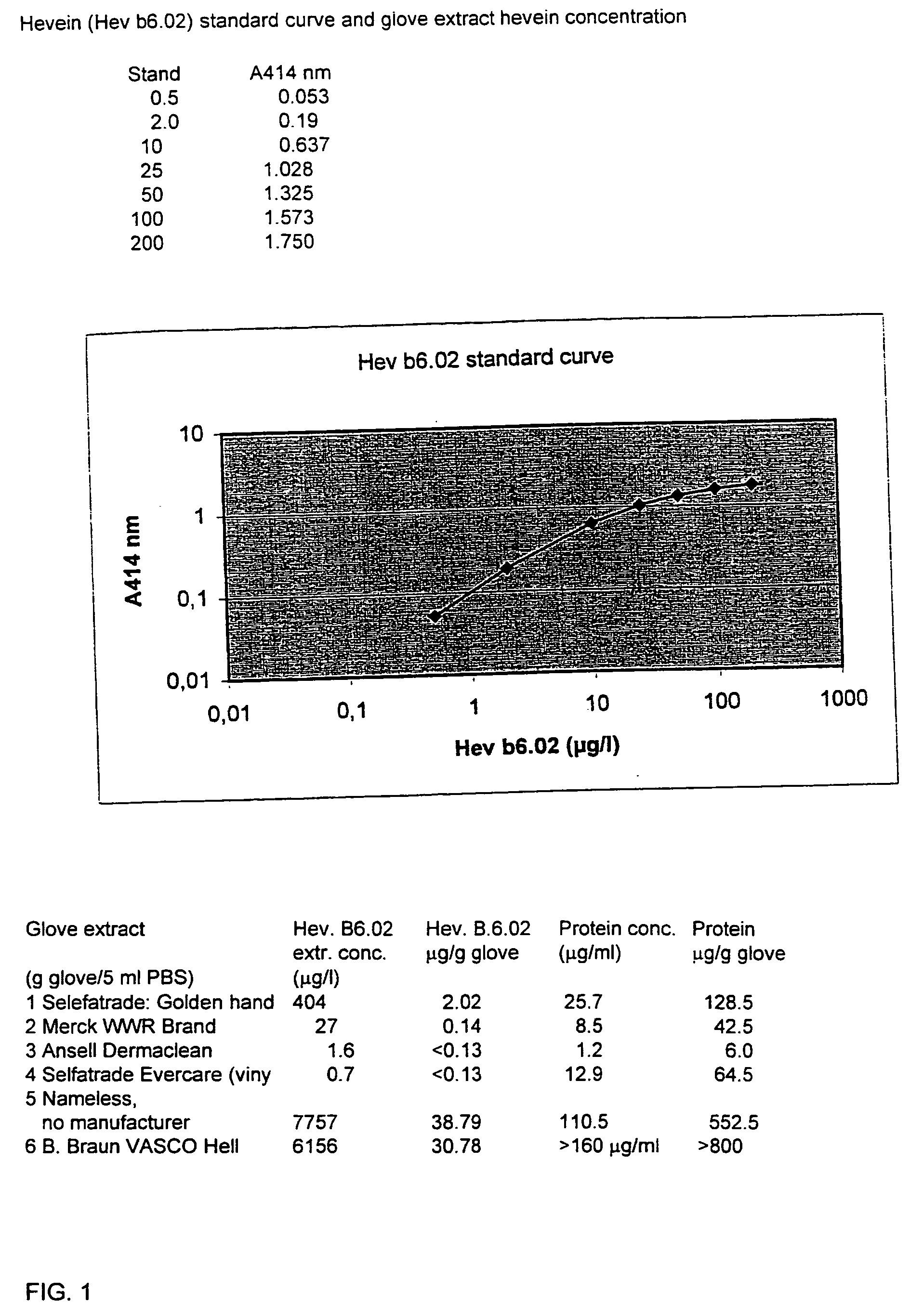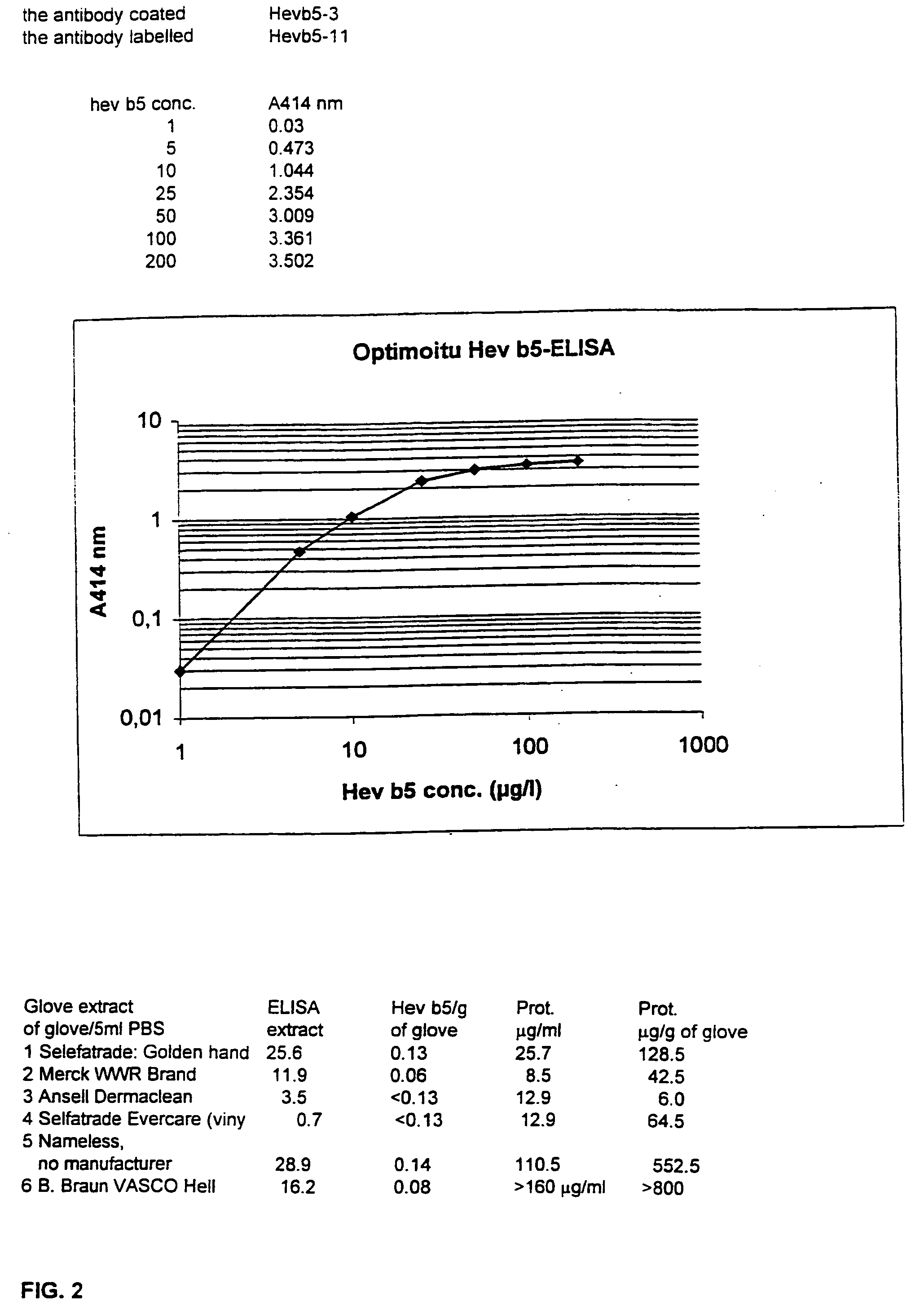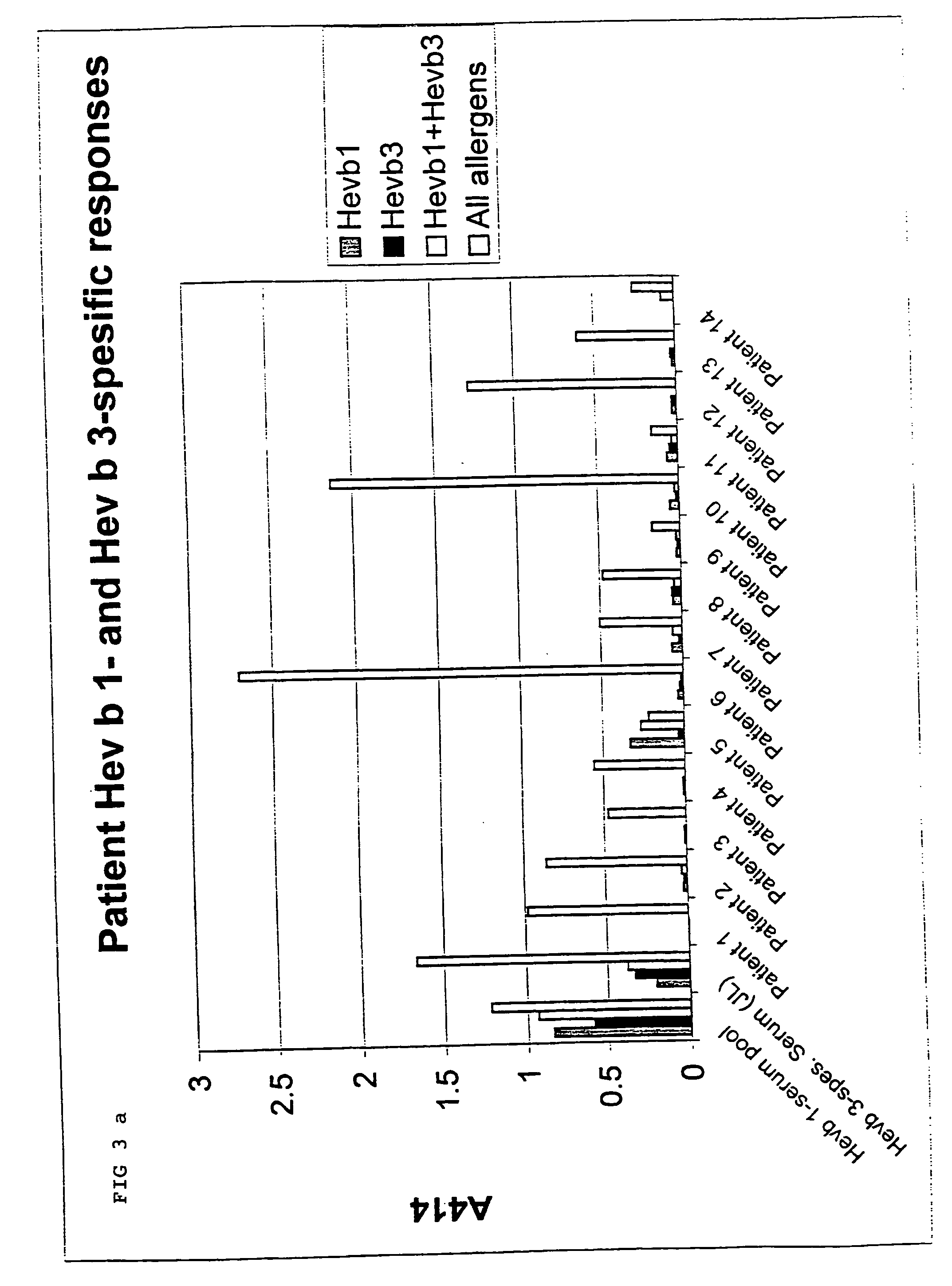Immunochemical methods
a technology of immunochemical methods and immunochemical products, applied in the field of immunochemical methods, can solve the problems of irritant and allergic reactions, nrl allergy has become a major occupational problem, and can cause allergic reactions, so as to achieve reliable diagnosis of latex allergy
- Summary
- Abstract
- Description
- Claims
- Application Information
AI Technical Summary
Benefits of technology
Problems solved by technology
Method used
Image
Examples
example 2
Preparation of Recombinant Hev b 6.02
[0110] For the preparation of the recombinant Hev b 6.02 or hevein (sequence id. no. 11), the hevein coding fragment was amplified by PCR from a pIIProhev plasmid essentially as described by Airienne, K. J. et al. [ Prot. Express. Purif. 9 (1997) 100-108]. PCR Prohev6 [(5'-TA TGT GGA TCC GAC GAC GAC GAC AAA GAG CAA TGT GGT CGG CAA GCA-3'(sequence id. no. 3); BamHI site underlined; enterokinase site in bold; hevein sequence in italics] was used as the forward primer and Prohev2 [5'-AAC ACA AGC TT C TTA GTC TTT GCA ATT GCT TTG GC-3' (sequence id. no. 4); HindIII site underlined; stop codon in bold; hevein sequence in italics] as the reverse primer. The PCR was performed as described by Airenne. K. J. and Kulomaa, M. S. [Gene 167 (1995) 63-68]. After digestion with Bg / II+HindIII (Promega, Madison, Wis., USA), the PCR product was applies to a 1.5% preparative agarose gel. The fragment, which was of the expected size, was recovered from the gel as des...
example 3
Preparation of Recombinant Avidin-Hev b 6.02 Fusion Protein
[0112] To create recombinant viruses containing both the Hev b 6.02 and the avidin coding regions, the amplified fragment containing Hev b 6.02 sequence and obtained as described in Example 1 was subcloned into pFastBAC1-based vector pbacAVs+C, which contains a secretion-compatible form of recombinant avidin, essentially as described by Airenne, K. J. et al. [Prot. Express. Purif. 17 (1999) 139-145].
[0113] Subsequently, for the preparation of avidin- 6.02 fusion protein, .about.5 .times.10.sup.7 Sf9 cells (ATCC CRL 1711) in SF-900 II SFM serum-free culture medium depleted of biotin and Pluronic F68 (GIBCO BRL, Gaithersburg, Md., USA; 041-94100A) were seeded to a final volume of 25 ml in a 250 ml Erlenmeyer flask. Recombinant viruses were added to give a multiplicity of infection of 2 Pfu / cell. After three days of incubation at 27.degree. C. in a shaker at 125 rpm, the cells were pelleted by centrifugation (1000.times.g, 22.d...
example 4
Preparation of Recombinant MBP-Hev b 1 Fusion Protein and Recombinant Hev b 1
[0115] For the preparation of the recombinant Hev b 1 or REFor rubber elongation factor (sequence id. no. 5), the Hev b 1 coding fragment was amplified by PCR from a REF-pMALc-2-plasmid. The PCR forward primer was 5'-ATGGCTGAAGACGAAGACAACCAA-3'(Hev b 1 sequence in italics; sequence id. no. 6), and the reverse primer 5'-GATAT-CAAGCTTTCAATTCTCTCCATAAAACACCTTA--3', (HindIII site underlined; Hev b 1 sequence in italics; sequence id. no. 7). The PCR was performed as described by Airenne. K. J. and Kulomaa, M. S. [Gene 167 (1995) 63-68]. After digestion with HindIII (Promega, Madison, Wis., USA), the PCR product was applied to a 1.5% preparative agarose gel. The fragment, which was of the expected size, was recovered from the gel as described by Heery et al. [TIG 6 (1990) 173] and purified further with ethanol precipitation. The purified fragment was subcloned into the pMAL-c2-plasmid that had been digested by Xm...
PUM
 Login to View More
Login to View More Abstract
Description
Claims
Application Information
 Login to View More
Login to View More - R&D
- Intellectual Property
- Life Sciences
- Materials
- Tech Scout
- Unparalleled Data Quality
- Higher Quality Content
- 60% Fewer Hallucinations
Browse by: Latest US Patents, China's latest patents, Technical Efficacy Thesaurus, Application Domain, Technology Topic, Popular Technical Reports.
© 2025 PatSnap. All rights reserved.Legal|Privacy policy|Modern Slavery Act Transparency Statement|Sitemap|About US| Contact US: help@patsnap.com



